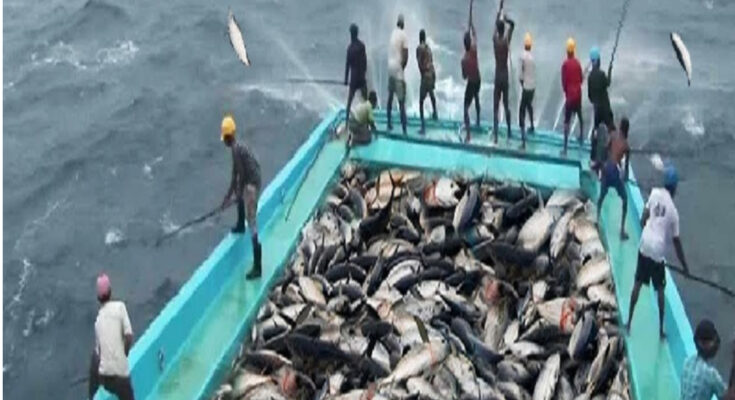Tuna fishing is not just a skill but an art that requires precision, experience, and a deep understanding of the sea. Here’s how skilled fishermen often catch large tuna:
1. **Locating Tuna Schools:** Skilled fishermen use various methods to locate schools of tuna, including radar, sonar, bird activity, and visual cues such as splashing or jumping fish.
2. **Using Bait and Lures:** Tuna are attracted to various types of bait, including live fish (like sardines or mackerel) and artificial lures designed to mimic their natural prey.
3. **Trolling Technique:** One common method is trolling, where lines with bait or lures are drawn through the water at controlled depths and speeds behind a moving boat.
4. **Speed and Agility:** Tuna are known for their speed and agility, so fishermen must react quickly to hook and reel in the fish once it bites.
5. **Strength and Endurance:** Tuna are powerful fish known for putting up a strong fight. Skilled fishermen use specialized equipment, including strong rods, reels with high-quality drag systems, and sturdy lines to handle the stress of a big catch.
6. **Team Coordination:** On commercial fishing vessels, crews work together seamlessly to manage multiple lines, coordinate movements, and ensure safety while handling large fish.
7. **Conservation Practices:** Responsible fishermen often adhere to sustainable fishing practices to protect tuna populations and the marine ecosystem. This includes adhering to catch limits, using gear that minimizes bycatch, and releasing smaller or non-target tuna species.
Overall, tuna fishing requires a blend of experience, technique, and respect for the ocean environment. It’s a challenging pursuit that continues to evolve with advancements in technology and conservation efforts aimed at preserving tuna populations for future generations.



